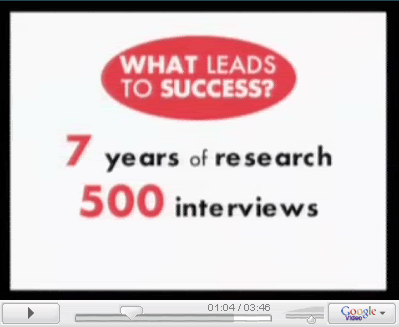Dear Friends.
We live in a busy world, and there are thousands of messages vying for people’s mental bandwidth each day. There is more and more competition for each person’s attention, so you may be wondering how you can increase the odds that the messages you send will reach their targets.
In The Power Of Rapport, we looked at ways to use the natural phenomenon of rapport to meet people at their model of the world through our behaviour. Today we will discuss the meta-pattern of pacing and leading to explore how you can meet people at their map of the world with language, before leading them somewhere else.
Meet them at their map of the world
St Francis of Assisi spoke of seeking to understand before seeking to be understood. A technique used in ancient Greece to settle disputes had those involved state the opposition’s case to the satisfaction of the opposition before they stated their own case. Whenever you set out to influence someone, there is great value in meeting them at their ‘map of the world’ before you start the process of leading them somewhere new.
In sales, this process is referred to as ‘pacing and leading’; making statements (for instance) about the current ‘reality’ for an individual or group before directing their attention somewhere else. For example…
Every Friday at 7am, I go to a business networking group where I get the opportunity to do a 60 second ‘commercial’ for services that I offer. I will often start my commercial with something like the following:
"We’re here at business networking group , it’s Friday morning, and it’s early, and you may be wondering what I’m going to tell you about today… because we’ve all come here for a reason, and the reason is to build our businesses, so I know you’re going to be interested in helping me build mine etc… "
On the face of it, this is a fairly ordinary intro, with nothing particularly notable about this, but as you look more closely at the way the statements are structured, you may begin to notice that there is a mixture of things that are ‘true’ and things that are more ‘speculative’.
‘True’ – Pacing Statements
We’re here
it’s Friday morning
it’s early
we’ve all come here for a reason
the reason is to build our businesses
‘Speculative’ – Leading Statements
you may be wondering what I’m going to tell you about today
I know you’re going to be interested in helping me build mine
1) Practice making verifiably true statements about where you are right now (for instance, "I am sitting in my office, the sun is shining, it’s 2003, it’s Tuesday etc.) Continue until you have made at least 10 statements.
We like a sense of the familiar, and as you sit here, making these statements aloud, you may start to feel pleasantly relaxed. If it’s difficult to make the statements aloud initially, write them down.
2) In a low-risk situation (eg. with a friend), practise making some pacing comments to another person, and notice what effect they have (people will often nod or say mmm-hmmm in response.)
Creatures of habit
What you are doing as you make the pacing statements is setting up a response pattern of ‘that’s true’ in the other person’s mind. Human beings are creatures of habit - we like what’s familiar. The human brain seeks pattern and, having established a pattern, likes it to continue. When the brain has said ‘that’s true’ three times, it’s likely to say it the fourth time.
When pacing and leading is done elegantly, it is possible to move from saying mostly things which are ‘verifiably true’ to saying mostly things which are ‘made up’ without the listener(s) noticing the transition. The overall shape / structure is as follows:
Pace – pace – pace - lead
Pace – pace – lead – lead
Pace – lead – lead – lead
Lead – lead – lead – lead… (+an occasional pace for good measure)
3) Set yourself a goal for communication in a low-risk situation (eg. to persuade the other person to go for a coffee.) Use pacing and leading to seamlessly lead them to that goal.
Pacing and leading often sounds ‘clunky’ at first, but as you practice it more and more, you’ll begin to find yourself doing it spontaneously, without even planning it consciously.
4) Begin to identify all the areas in your life where you can start using pacing & leading to persuade others more effectively, then use it!
This approach may seem basic, but I’ve used in hundreds of situations, including getting the attention and interest of a hostile audience, winning the trust of a sceptical client, and comforting a hurt child (and stopping them crying in under a minute.) As usual, this is a powerful technique – ensure you use it to help yourself and others. When you are acting in someone else’s best interests, it comes across.
More advanced
You can use this technique to turn around situations that seem to oppose you directly. I was once coaching someone in a large organisation who had been told to see me by his boss. He started out by saying "I’m normally sceptical of this sort of thing, but you come highly recommended." My gut feeling was that he was still highly sceptical, despite his protestation. I said "Well you should be sceptical about me." He looked puzzled and asked why. I said "Because until you’ve seen for yourself just how quickly I can help you get great results, you’ve got no reason to be anything other than sceptical." He relaxed immediately and we began.
I met him at his map of the world, and threw in a double bind for good measure (in order for him to be sceptical of me, he would have to be sceptical about what I was telling him ("be sceptical"), so on some level he had to consider being sceptical of his own scepticism. I know this is a bit confusing – that’s part of why it works!)
Summary
Pacing and leading is a powerful way to influence others…
1) Practice making verifiably true statements about where you are right now (Eg. I am sitting in my office, the sun is shining, it’s 2007, it’s Thursday etc)
2) In a low-risk situation (eg. with a friend), practise making some pacing comments to another person, and notice what effect they have (people will often nod or say mmm-hmmm in response.)
3) Set yourself a goal for communication in a low-risk situation (eg. to persuade the other person to go for a coffee.) Use pacing and leading to seamlessly lead them to that goal.
4) Begin to identify all the areas in your life where you can start using pacing & leading to persuade others more effectively.
All Related Topics: 3 Minute Rapport/Persuasion
Thanks for spending 3 minutes with me...
The best is yet to be!
On Your Team
Jeffrey Stanton
Your Trusted Advisor For Life
One of the fastest ways to build a successful referral based business is by training. Now, with me, I like to invest significant time immersing myself in training, while some people prefer to take it in bite-size chunks. Whatever your preference is, now is the best time to contact me.
If you have found this tip useful, please share it with any friends, family, colleagues and associates who you think will be interested. Feel free to print it (with credit and subscription information) and continue to enjoy the tips. I am always grateful for any comments, criticisms or other feedback that you may have. Please send them to feedback@jeffreysjournal.com ,


































No comments:
Post a Comment